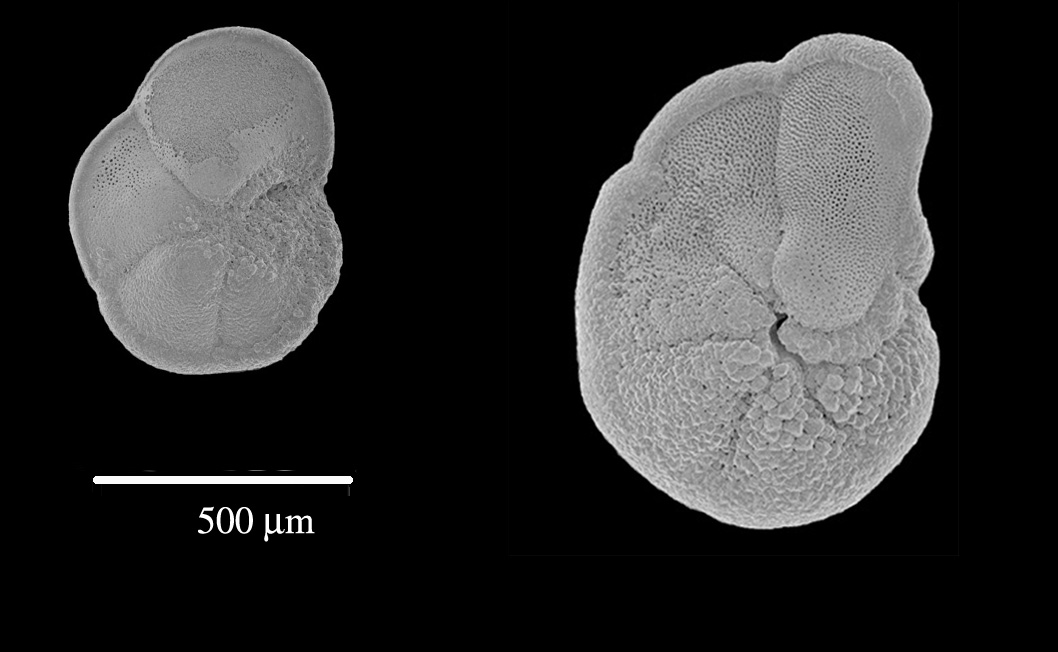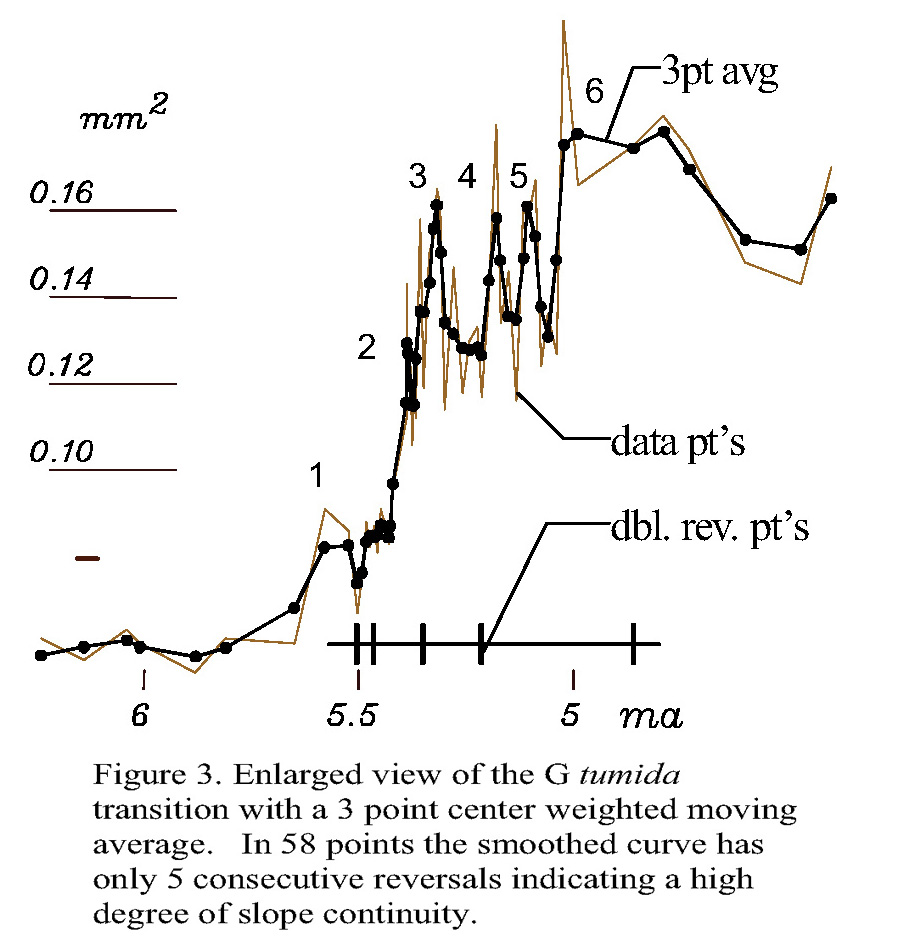Letter to John Smart,
I’m very interested in your Evo-Devo Universe project. I also found some interesting examples of development, that operates by multi-level selection. Below is a bit of a very nice clear example, a case of punctuated equilibrium occurring by a series of rapid evolutionary progressions (spurts), for a plankton species, G. tumida. It goes from being small and smooth to big and bumpy, in a half million years. What’s unique about the succession is the strong evidence of repeated rapid evolutionary progress.

The math I use is a little different, diagnostic math not deterministic math. The theory is a little different, too, about how to look beyond representational theory. One identifies natural systems as complex organizational developments, working as a whole. But your “big idea” that the universe is doing what life is doing, fits very well.
Paper- http://www.synapse9.com/GTRevis-2007.pdf

The evidence is that each visible spurt reflects a genuine accumulative process. The statistical analysis demonstrates that clearly. The question then is what of accumulative evolutionary progression could be looked for, more of a “problem finding” exercise than a “problem solving” one.
The appearance is that we’re seeing an organizational learning system in action, like biological systems are and lots else, is just the kind of question my “physics of happening” is designed to point to evidence of. There’s an interesting direct link between the conservation of energy which necessitates a continuity of energy flows, and the discontinuity in events of beginning and ending.
It provides a basis for studying emergences that occur by bursts of local self-organization.
The theorem that exposes the key question helps validate a rather effective new method of exploring independently organized systems and their development processes, without manipulating them…! www.synapse9.com/drtheo.pdf
What you see at the left is clear evidence of developmental bursts of continuous evolutionary development spanning a half million years.
…….
How might such evolutionary progressions work?
Is it really “Devo-Evo” ?
Finding developmental processes in evolution is not so shocking, if it’s an extension of how organisms themselves develop. Growth is a developmental process, not a random selection process. The map for the developmental sequence, one first roles of the genetic code, charts a developmental path.
The question would be, how can genetic evolution alter the developmental path as a way of altering the organism that develops? Somehow the genome serves to prompt a set of branching paths of developmental processes throughout a developing organism, and to then coordinate the limits they come to in maturity.
Such a record of coordinated branching developmental paths would then be seen as what guides development. If so, might it not also suggest that the functional variations of the genome could primarily occur by extending and adjusting the developmental path?
Then the genome could be self-healing except near the extremities of the developmental paths it leads, and so perhaps solve several of the puzzles of rapid coordinated multi-level evolution at one time. The larger implication though, what makes it actually plausible, is this would then make mutation not random, but accumulative, local and branching.
It could occur on all branches at once, preferentially. What really got my attention was realizing that this would make multiplying variation *AT the point of successful variation* the rule.
That would make genetic variation an active environmental exploration process. Branching would then explore the environment of potentials in something of the same manner as earth worms or ants probe around in finding a path. Successful variation is then followed by multiple variations on it and extending from it. That solves other major problems like complex co-evolutions.
That sort of ‘mutation’ could be *path finding* and essentially exploratory in the environment
It would then be expected to show up in the data as evolutionary change in growth spurts, as is clearly shown for G. tumida, and always implied by the evidence of punctuated equilibrium.
Does a system design allowing rapid whole system variation in coordination with its environment fit the pattern of punctuated equilibrium? I think it provides the one big thing missing from every other theory.
It allows for divergence followed by exploration and then maturation, breaking from and remaking a stable form. Would you then need to treat both mutation and selection as one interactive process and as one transient dynamic event, a single ‘thought’ of combined organism/environment learning?
It takes a little getting used to, but it’s tempting. The final and perhaps best piece, the ‘coupe de gras’, is you don’t need to exlude the other kinds of evolutionary processes. They can all still operate, in tandem.
Thus, I think, all the big missing pieces are covered and no new ones created!
pfh
I have good piece in Cosmos & History giving an overview of how to identify and investigate natural systems that ‘think for themselves’ in this way, starting from that perennially curious bit of evidence that points to them, systems that behave as a whole, with no means for storing the rules they are implicitly following! Life’s Hidden Resources for Learning
